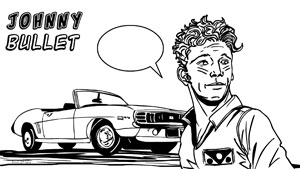|
|
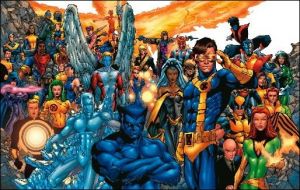 |
With so many characters and their histories populating the pages of the many Marvel Comics X-Books, it is easy to get lost in what passes for continuity in these books. The X-Men are one of Marvel Comics’ perennial best sellers, and for a long time bottom lines dictated that there be as many of these types of books as possible, but, as mentioned, it seemed that Marvel Comics didn’t quite grasp the fact that storytelling is what will keep monthly revenues up. There were some interesting runs like Grant Morrison’s on New X-Men and Joss Whedon’s on Astonishing X-Men, but these were the exceptions. These books individually might have been well written and drawn, but the plethora of other X-Books were not. The idea that more is better though reigned supreme and several books with the X moniker were published, and soon forgotten. Recently though, after the departure of the horrible Matt Fraction from Uncanny X-Men, a host of new and established writers began to stake their claims to the various X-Books. These writers managed to weave together not just a strong and defining narrative that managed to keep track and give a focus to the many characters in the books, but one that managed to elevate each book individually to a level that allows them to stand thematically and continuously independent from one another, while not alienating the titles from one another at the same time. This revamping of the titles began to take place shortly before the defining event of this era of the X-Men in comic books, but really took off with the advent and fallout from said event. SCHISM did wonders for the X-Franchise, and has allowed the X-Team of writers to tell some really gripping stories.
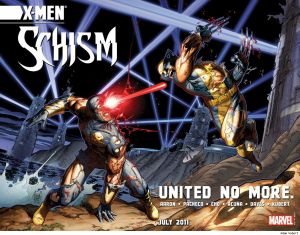 |
When Jason Aaron revamped and made Ghost Rider into one of Marvel Comics’ best books, then made Wolverine readable again, as a book and as a character, and finally brought it all together by penning SCHISM and launching Wolverine and The X-Men, franchise history was made. Marvel Comics managed to update some old plotlines, and supplied wayward and new X-readers with the perfect jumping on point. Readers didn’t need much of a back-story fill in, nor did Marvel Comics, as a company, need to reboot their entire line (like DC Comics has to very mixed results). The philosophical split between Scott Summers/Cyclops and Logan/Wolverine over the direction of the X-Men as a super-hero group, and defenders of both mankind and mutantkind alike, provided the X-writers, and readers, a perfect breaking point with the current status quo that simultaneously allowed the X-Franchise to keep the best parts of their new incarnation while reviving what made the franchise so great in the first place. Namely, these aspects are the keeping of the X-Men’s San Francisco (and metaphorically loaded) setting, while reviving the “School for Higher Learning” (formerly “Gifted Youngsters”) setting. The “Xavier’s School” (now “Jean Grey School”) setting is what the X-Men, as a concept, were built upon. Bringing this back allows for a rejuvenation of the energy that young people so often exude (and that the young students of Grey’s embody). The original pages of Uncanny X-Men crackled with this type of energy in the 1960s. Keeping Cyclops and his team on Utopia in San Francisco allows for a free range exploration of the “mutant as metaphor” theme. Both of these themes are fully engaged in the pages of their respective homes, Uncanny X-Men and Wolverine and The X-Men, and through the writing of Kieron Gillen and Jason Aaron.
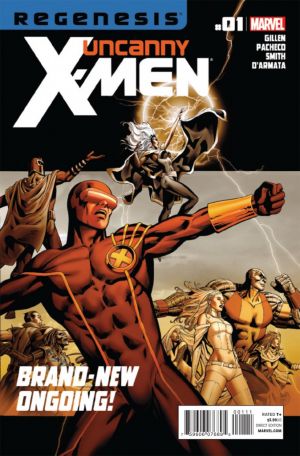 |
These themes aren’t worth the paper they’re printed on though unless the writers can execute them well. Gillen, in addition to being a master of the one-off story like those in Uncanny X-Men (Vol. 2) #4 and Uncanny X-Men #539, is a master of intelligently crafted short arcs that pack plenty of story into them while delving into important “mutant as metaphor” themes deftly. His recently completed opening arc in Uncanny X-Men (Vol. 2) “Everything is Sinister” utilized a pretty boring character designed in the 1990s with outrageous looks in mind (Mr. Sinister), Kirby’s Space Gods (The Celestials), some knock down drag out action, and some serious tension to weave an instantly classic story showcasing Cyclops’ growing militant mindset while demonstrating the difference between an evil fascistic conformity and diverse unity in pitting Sinister and his clones against the highly individualistic, yet united, X-Men.
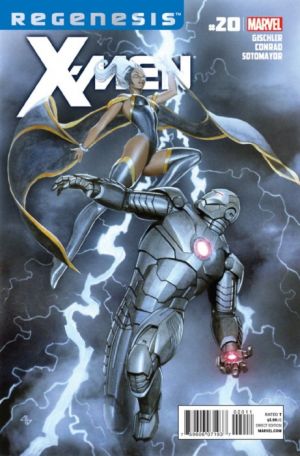 |
X-Men is a series that I originally felt was going to be a bit redundant (the first arc was), but has blossomed into a great book that firmly places the X-Men, as a major team of heroes, in the greater Marvel Universe by smartly crossing them over with other Marvel Comics heroes. Victor Gischler’s recent arc involving “Sentinel dealing arms dealers, unstable former Soviet Republics, The X-Men, and War Machine” is another allegorically packed story that touches on real world and international fears of WMD’s falling into the wrong hands, and the politics of dealing with such rogue states. These are real world mirroring situations that turn natural allies like War Machine and The X-Men into unnatural enemies. In this story arc Gischler demonstrated that he not only has a very learned grasp on The X-Men as metaphoric vehicles for intelligent tales, he is up on international tensions and politics. I called this X-book the "best X-themed thing I've read or seen since X-Men First Class", and if Gischler keeps up this kind of storytelling, then it really might end up being the gem in the crown of the current and brilliant string of X-books being published monthly.
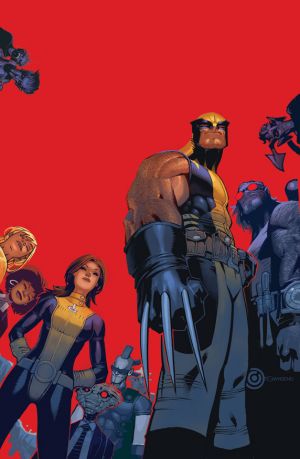 |
Finally, Jason Aaron’s Wolverine and The X-Men’s praises have been sung by me many times here at The Bin. There really isn’t much more that I can say on the topic other than Wolverine and The X-Men delivers something that has been missing from the pages of an X-book for quite some time. The aforementioned school setting allows the X-Men to get back to what Aaron himself describes as “what made the X-Men great in the first place.” With Logan as Headmaster, Kitty Pryde as Headmistress, and Rachel Grey (!) and Bobby Drake/Iceman as instructors, The Jean Grey School for Higher Learning is the place to be if you’re a young mutant or super being (The school boasts the one and only member of The Brood who isn’t trying to kill everyone in sight as a student!).
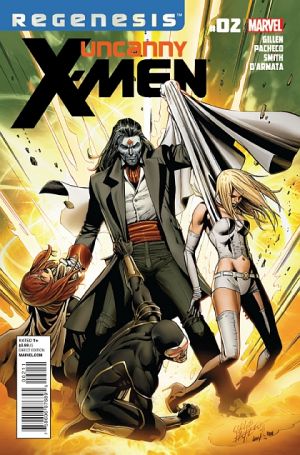 |
While these three X-books are my favorites, the franchise’s other titles, the Peter David written X-Factor, Abnett and Lanning’s New Mutants, Rick Remender’s Uncanny X-Force, and the just completed Mike Carey run on X-Men Legacy are all strong reads also. As well as these books are written though, they feel like they are on the periphery of the three core titles discussed above. They’ve been a little slower to get into line with the post-SCHISM status quo, mostly because they had storylines to wrap up, but with Rogue taking over as the main focal character in X-Men Legacy (along with Rachel Grey too-hopefully- if the promo art is any indication) the future of that title looks particularly bright.
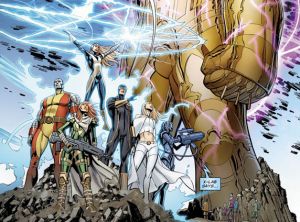 |
I started getting back into X-Men after X-Men: First Class blew me away. It reminded me just how great the X-Men as a concept can be in the hands of the right story tellers. Unlike DC Comics did with the Bat-franchise of books, which is just now getting in line quality wise with the recent Bat-films, Marvel Comics’ mutant books took full advantage of their recent box office offering and pulled off an event and subsequent storylines (directed by some great writers) that have kept me interested, but, even more importantly, reading and buying each month.
Like music? So does Andy. Read his thoughts on it here.
© Copyright 2002-2019 by Toon Doctor Inc. - All rights Reserved. All other texts, images, characters and trademarks are copyright their respective owners. Use of material in this document (including reproduction, modification, distribution, electronic transmission or republication) without prior written permission is strictly prohibited.

